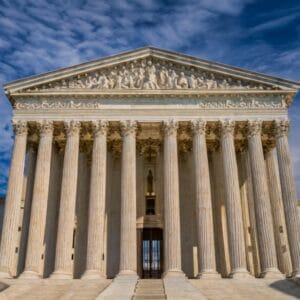The judicial branch is one of the three branches of the U.S. government, along with the executive and legislative branches.
The judicial branch is responsible for interpreting the laws made by Congress and enforced by the president, and for deciding if they are consistent with the Constitution.
The judicial branch consists of the Supreme Court and other federal courts, which are appointed by the president and confirmed by the Senate.
Here are some facts about the judicial branch that you might find interesting:
- The Constitution does not specify the number of justices on the Supreme Court. Congress has the power to change it, and it has varied from six to 10 over time. The current number of nine justices has been in place since 1869.
- The Supreme Court has the power of judicial review, which means it can declare laws or actions of the government unconstitutional. This power was established by the Court itself in the landmark case of Marbury v. Madison in 1803.
- The Supreme Court hears about 100 to 150 cases each year, out of thousands of petitions it receives. The Court grants certiorari, or agrees to hear a case, when at least four justices vote to do so. The Court usually only accepts cases that involve important constitutional issues or federal laws.
- The Supreme Court operates on two terms: the October Term and the April Term. Each term begins on the first Monday of that month and lasts until all cases are decided, usually by late June or early July. The Court hears oral arguments from October to April, and issues opinions from November to July.
- The federal court system has three levels: the district courts, the circuit courts of appeals, and the Supreme Court. There are 94 district courts, which are the trial courts of the federal system. There are 13 circuit courts of appeals, which review cases from the district courts. There is one Supreme Court, which is the final arbiter of federal law.
- The federal judges serve for life, unless they resign, retire, or are impeached and convicted by Congress. This is to ensure their independence and impartiality from political pressure. The only Supreme Court justice to be impeached was Samuel Chase in 1804, but he was acquitted by the Senate.
- The federal judiciary has its own website, where you can find information about the courts, judges, cases, rules, statistics, and more. You can also watch live or archived video of oral arguments from some of the circuit courts of appeals.
The Supreme Court is the highest court in the United States. It has the power to review the laws and actions of the federal and state governments and decide if they are in accordance with the Constitution.
